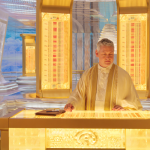
The $2 Trillion Loss Aversion Trap
Jun 21, 2025
Studies show losses hurt twice as much as equivalent gains feel good—and this single psychological bias has destroyed more trading fortunes than market crashes, bear markets, and black swan events combined.
Fear of loss is a sticky poison that infiltrates every trading decision. Loss aversion makes traders hold losing positions too long while selling winners too early, creating a perfect recipe for portfolio destruction. This isn’t weakness—it’s hardwired human psychology that served our ancestors well but devastates modern traders.
Prospect Theory, developed by Nobel laureate Daniel Kahneman, reveals the mathematical reality: humans feel the pain of a $1,000 loss roughly twice as intensely as the pleasure of a $1,000 gain. In trading, this asymmetry turns rational risk management into emotional self-sabotage.
The contrarian insight? Sometimes the most dangerous risk is refusing to take calculated risks. The fear of loss often becomes the guarantee of loss.
The Loss Aversion Death Spiral
How does loss aversion affect traders’ risk-taking? It creates a predictable pattern of wealth destruction that Wall Street professionals exploit daily.
First, loss aversion makes traders risk-averse in profit zones. When a stock moves 10% in their favor, the fear of giving back those gains triggers premature selling. They book small profits while missing massive trends that could compound their wealth.
Second, loss aversion makes traders risk-seeking in loss zones. When a position moves 10% against them, they refuse to cut losses, hoping to “get back to even.” This transforms small losses into portfolio disasters.
The result? A trading pattern that maximizes pain: cutting profits short and letting losses run wild—the exact opposite of successful trading.
The GameStop Revelation: Loss Aversion in Action
The 2021 meme stock phenomenon exposed loss aversion on a massive scale. Professional traders who shorted GameStop at $20 watched it soar to $400, but loss aversion prevented them from cutting losses quickly.
Meanwhile, retail traders who bought GameStop early experienced the opposite trap. Loss aversion made them sell at the first sign of profit, missing the 2,000% gain that followed. Those who held through volatility weren’t displaying courage—they were paralyzed by loss aversion, unable to realize losses or gains.
The contrarian lesson? The biggest risks often come from trying to avoid risk. The hedge funds that got squeezed weren’t reckless—they were victims of their own loss aversion.
Crypto’s Loss Aversion Laboratory
Cryptocurrency markets offer a real-time laboratory for observing loss aversion’s destructive power. Bitcoin’s journey from $1 to $60,000+ is littered with traders who sold too early or held too long.
Consider the typical crypto trader’s journey: They buy Bitcoin at $30,000, watch it drop to $25,000, and hold (loss aversion preventing them from cutting losses). When it recovers to $32,000, they sell immediately (loss aversion making them hyper-sensitive to preserving small gains). Then they watch it climb to $50,000 from the sidelines.
Loss aversion creates a trading pattern that guarantees buying high and selling low—the mathematical formula for wealth destruction.
The AI Hype Trap: Modern Loss Aversion
The artificial intelligence investment boom demonstrates how loss aversion adapts to new markets. Traders who bought AI stocks early often sold after modest gains, fearful of losing their profits. Those who missed the initial move refused to buy at higher prices, paralyzed by the fear of buying at the top.
Meanwhile, professional investors who understood loss aversion psychology continued accumulating AI positions despite volatility. They knew that loss aversion would create selling pressure from retail traders, providing better entry points for patient capital.
The contrarian insight? When everyone fears buying at the top, you’re probably nowhere near the top.
The Disposition Effect: Loss Aversion’s Trading Signature
The disposition effect—the tendency to sell winners too early and hold losers too long—is loss aversion’s signature in trading accounts worldwide. Studies show this pattern destroys 2-5% of annual returns for typical investors.
Here’s the mathematical reality: If you sell winners at 10% gains but hold losers to 20% losses, you need a 67% success rate just to break even. Most traders achieve 40-50% success rates, guaranteeing long-term losses.
The disposition effect explains why 80% of day traders lose money despite access to the same information and tools as professionals. It’s not about information—it’s about psychology.
The Contrarian’s Loss Aversion Playbook
Understanding loss aversion isn’t enough—you must weaponize it. Here’s how contrarian traders turn psychology into profit:
Reverse the pattern. Set profit targets that exceed your stop-losses by at least 2:1. This forces you to let winners run while cutting losses short—the mathematical foundation of trading success.
Use position sizing as psychological armor. Risk small amounts on each trade so losses don’t trigger emotional responses. When you’re not afraid of losing, loss aversion loses its power.
Automate your emotions away. Use stop-losses and take-profits to remove emotional decision-making. Your future self will thank you for overriding your present biases.
Hunt for loss aversion in others. When retail traders are panic-selling, professional money is accumulating. When everyone fears risk, the biggest risk is not taking any.
The Paradox of Risk: Why Safety Becomes Dangerous
Loss aversion creates a dangerous paradox: the attempt to avoid risk often creates the biggest risks of all. Traders who refuse to take small, calculated losses end up taking massive, uncontrolled losses.
Consider the “safe” investor who refuses to own stocks because they’re “too risky.” Over 30 years, inflation and taxes destroy their purchasing power just as effectively as a market crash—but slowly enough that loss aversion doesn’t register the threat.
The safest long-term strategy often feels the riskiest in the short term. This is why successful traders think in decades while unsuccessful traders think in days.
Breaking Free from Loss Aversion’s Grip
How does loss aversion affect traders’ risk-taking? It turns rational analysis into emotional decision-making, systematic strategies into random reactions, and potential wealth into guaranteed losses.
But here’s the contrarian truth: loss aversion is predictable, which makes it exploitable. The traders who prosper aren’t those who eliminate loss aversion—they’re those who account for it in their systems.
Stop trying to avoid losses. Start managing them. Stop fearing volatility. Start leveraging it. Stop trading with your emotions. Start trading with your math.
Your portfolio isn’t a reflection of your trading skill—it’s a reflection of your psychological management. Master loss aversion, and you’ll master markets. Ignore it, and it will master you.
The choice is binary: Will you be loss aversion’s victim or its student? The market doesn’t care—but your future wealth does.












